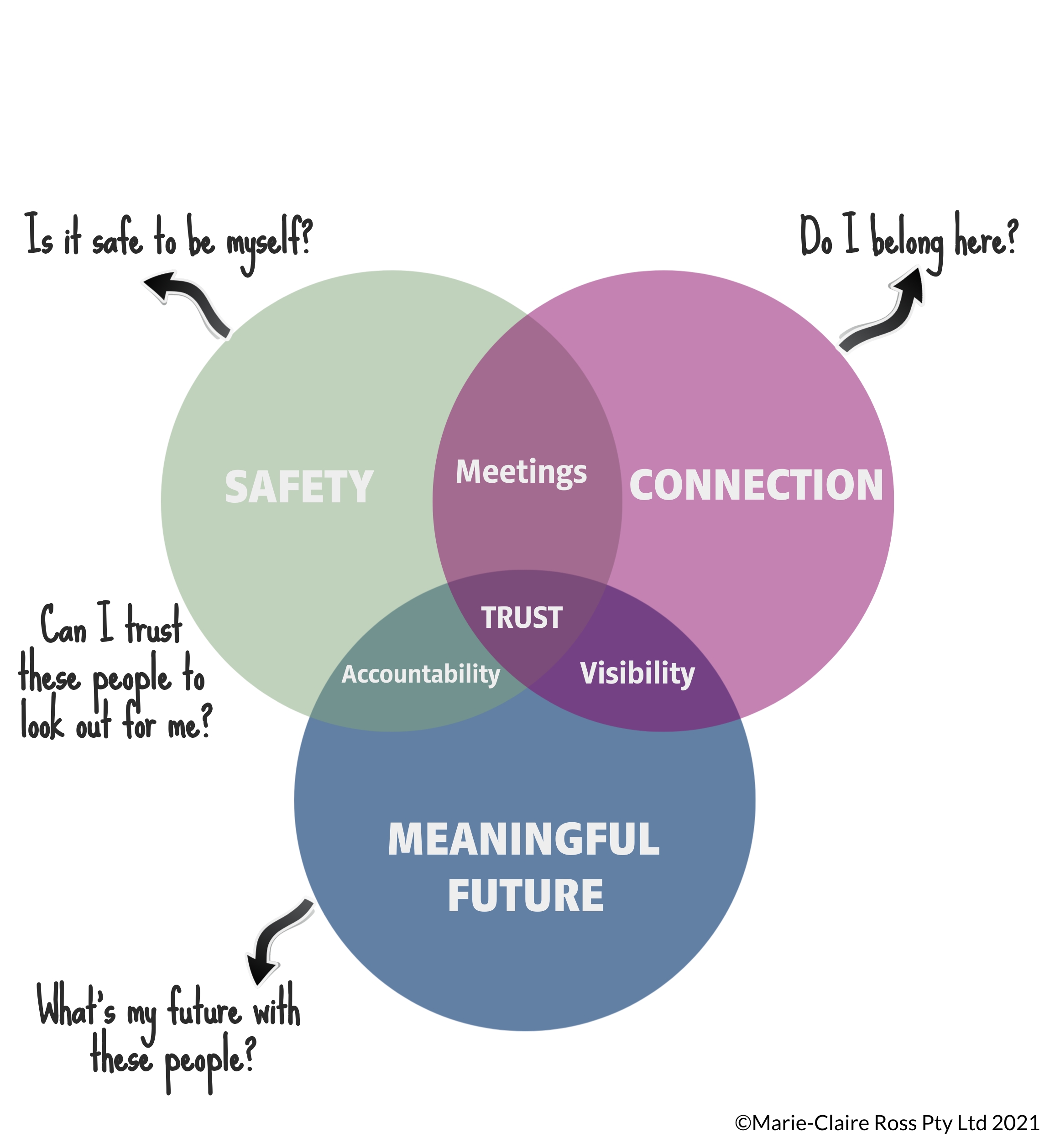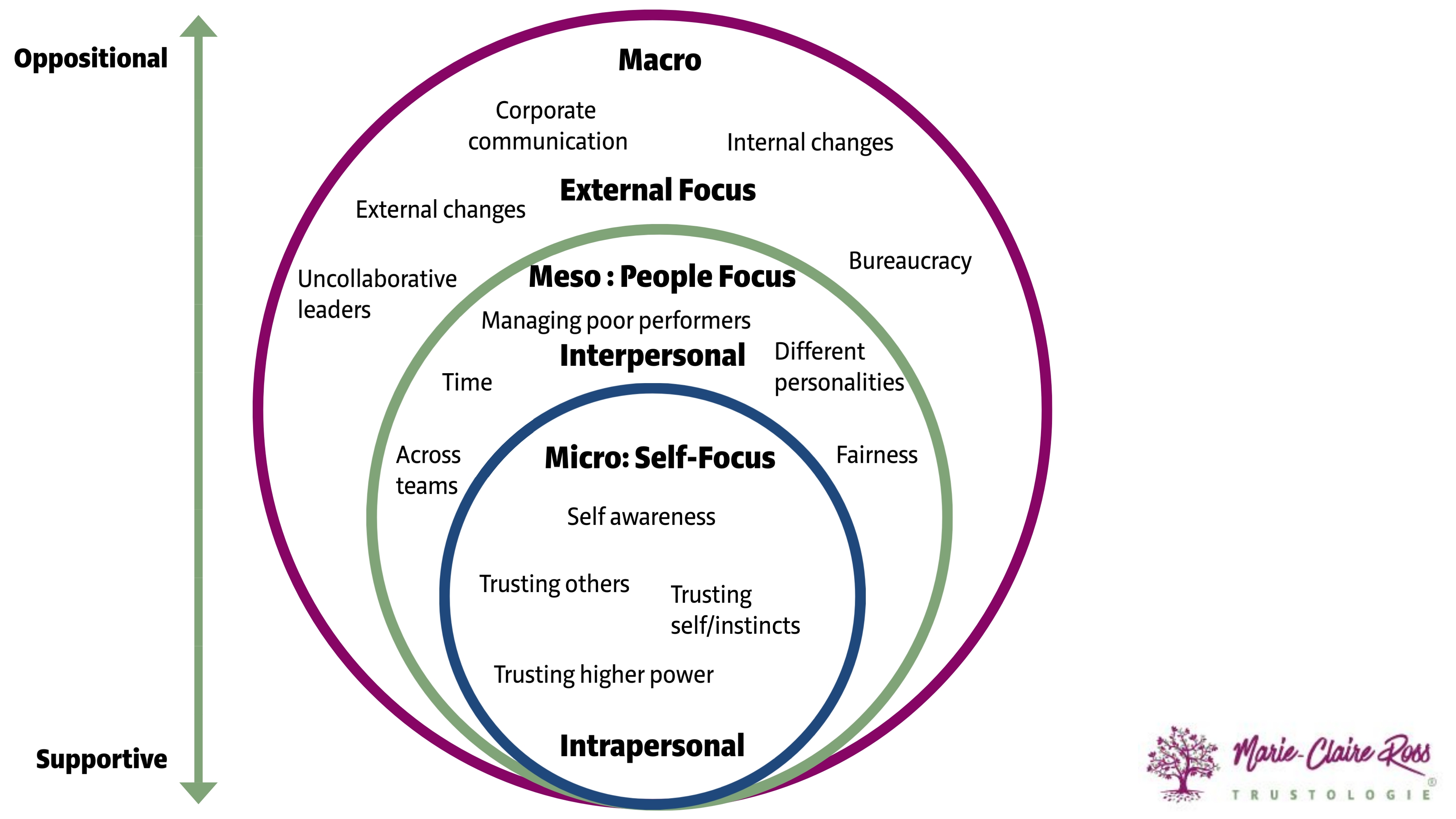
Every single moment our brains are scanning our environment and calculating whether we can trust the people around us. At work, we need to feel confident that speaking...
As someone who speaks at leadership conferences to help leaders understand how to identify and maintain trust, I often get requested about what team building exercises need to be designed into the conference program to help employees build trust with each other. What is interesting is that I commonly come across three common misperceptions of how you foster trust in a company that actually do more harm than good.
A common leadership gripe is an employee tendency of ‘working around people, not with people.’ Team members prefer working with those they know and avoid involving newcomers, the leader or even those with different job titles.
One of the best practices of award-winning workplaces is that inclusivity is encouraged, in order to eliminate the differences in employees’ experiences and actions.
Typically, leaders believe that to build trust and connection involves providing company retreats, sponsored lunches, team building activities, and even group yoga. While this does bond people together, the thing is it only further unites people who already like each other.
We are biologically programmed to want to be with people like ourselves. We tend to trust people we like. And highly value other people liking us.
Go to any work function and people tend to hang out with those they already know. This even extends to how people work together. When we need expertise, our tendency is to seek the advice of those that we like rather than who is the most knowledgable. The result is that people work in different directions and make poor-quality decisions.
Research at a hospital found that nurses will ask for a second opinion from those they feel comfortable around rather than those with the most knowledge. This is common in all industries and not just medical.
The problem is that we confuse liking someone with trusting them. The reality is that while we might indeed like someone, it doesn’t mean we can trust them to give us the right advice. Nor does liking someone mean that we can trust them all the time. For example, I might trust my husband to look after our children, but I wouldn’t trust him to give me sharemarket advice. He’s never invested in shares in his life. Nor would he trust me to perform an operation on him, particularly when he knows how much the sight of blood makes me squirm.
So while those examples may seem obvious, we all make the mistake of asking people for advice when they are the least qualified. The truth is trusting another person is actually dependent on the actual situational context. Yet, our kneejerk reaction is to consult those we know is because we feel uncomfortable asking for help from strangers. This automatic protection mechanism reduces our ability to harness the collective intelligence of our peers, but also build trust and improve our networks.
Paradoxically, asking for help from colleagues actually taps into the evolutionarily old human impulse to cooperate. It actually builds trust even more. Lab experiments undertaken by Dr. Paul Zak found that being vulnerable releases oxytocin in observers motivating them to work harder on organisational objectives.
Often, when leaders talk to me about how I’m going to build trust with their employees they will say “you’re not going to build trust by making us catch each other, are you?”
And the answer is a horrified, “no!” Trust falls are crap. A relic of the 1980s when people were pretty superficial and everything was for show.
Any human interaction that involves shallow fun or communication wears off. After all, trust is about building meaning, connection, and psychological safety.
Adam Grant, the Wharton professor, says it best with “trust falls are mostly friendly interaction and fake vulnerability. You’re all on good terms and you know that the other people will catch you.”
Trust falls would actually be better if you got a dysfunctional team to do them after considerable time and effort had been spent trying to repair trust. Then, they would potentially look a lot like this:
If you want to build trust right, you have to make people vulnerable to each other first.
Think about that – which do you think is easier? Being vulnerable in front of others or doing a lame trust fall? The answer is trust fall. Most people would prefer a whack over the head than having to be vulnerable in front of their workmates. No wonder so many companies prefer to do team building exercises that are more fun based.
But just like eating vegetables and whole grains are better for you than lollies and soft drink, the benefits of going down the hard road are more sustainable.
Most people assume that you need to build trust first to be vulnerable. In other words, “I’ll tell people about my fear of communal coffee machines, once they get to know me.” But it’s the other way around. Being vulnerable builds trust. It creates closeness. That is why teams that are forced to solve complex problems in stressful situations bond well. That sense of unity and togetherness can even last a lifetime. Particularly, when they have seen each other under pressure and not at their best.
Think of a colleague you don’t like.
Research indicates that who you don’t like and why you don’t trust them reveals what qualities you need from people, in order for them to build with you.
If you believe someone is a liar, it means you care a lot about a person’s character. If you think someone is incompetent, then job competence is important to you. And if you think someone is unreliable, it means consistency in behaviours is important.
Typically, leaders will define trust as encompassing 1-2 behaviors. But that’s what they value. And it’s one way. It doesn’t take into account what the other person requires, in order for you to build trust with them. And it’s different for everyone.
For example, I trust people who are predictable and follow up their words with action. But consistency is of little importance to my assistant. She prefers it when I believe she is capable to get the work done and I don’t micromanage.
One of the mistakes leaders commonly make is that they assume that to build trust you have to treat everyone the same. But it’s not true. You have to build trust with each person differently. And this means avoiding negative assumptions about other people’s behaviours that are more a reflection of who you are, and what you value than them.
This is why it’s so important to build trust one on one with people by openly discussing another person’s working style, expectations and communication preferences. Not only that, getting to know people at a personal level – their interests, career goals, family situation – is important for building trust as well. When we see people for who they are, a human being, rather than a tool for productivity, we are more likely to customise our interactions with them in a positive manner.
It’s difficult for most leaders to build trust effectively when they have a narrow definition of what trust means based on what is important to them and not a reflection of how others see it. As Abraham Maslow eloquently put it, “If all you have is a hammer, everything looks like a nail.”
If you do want to build trust with employees in your organisation, don’t fall into the old trap of sponsoring an extravagant dinner and expecting people will get to know each better.
Instead, ensure you have regular teamwork activities where people can safely move out of their comfort zones and meet new colleagues.
Go deep and encourage team members to undertake activities that reveal personal information about themselves. Put people through difficult challenges that force them to work together and solve problems. Encourage employees to seek out advice from an expert they don’t know well.
Throw in some self-awareness activities, so that employees can understand themselves better. A great exercise is for people to understand how they like to work, and receive communication, and then share that with others.
Whatever you do, avoid the easy way out by scheduling too much superficial interaction and communication. Trust falls and shallow fun are so passé.
Today’s employees are ready to work get-together and get real around issues. Now, more than ever before employees need to be encouraged to talk about the deeper stuff going on behind the scenes, in order to break through expensive people problems, that hold you back from moving to the next level.
So the real question is: are you ready to introduce authentic and honest teamwork activities that avoid skirting around the real challenges? (or would you prefer to do a trust fall?)

Every single moment our brains are scanning our environment and calculating whether we can trust the people around us. At work, we need to feel confident that speaking...

One of the things I find fascinating about improving any sort of interpersonal or intrapersonal skill is that you have to start with yourself.